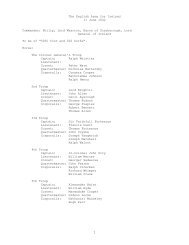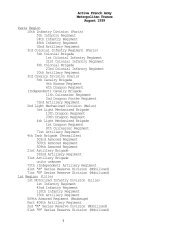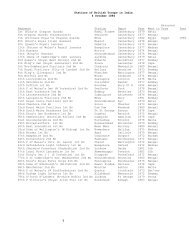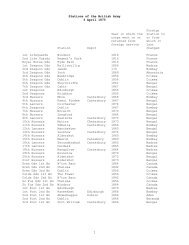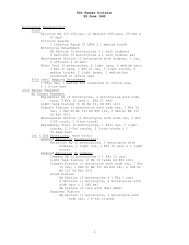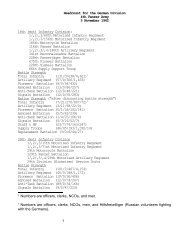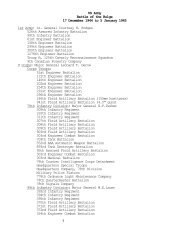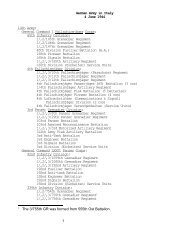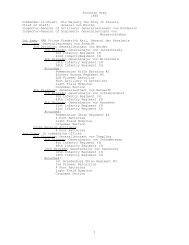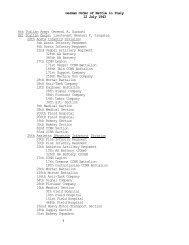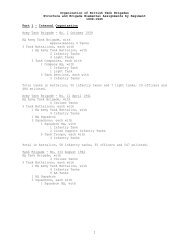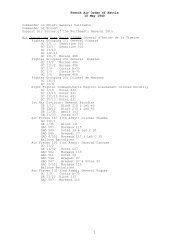Company Officer's Handbook Of The German Army - Command and ...
Company Officer's Handbook Of The German Army - Command and ...
Company Officer's Handbook Of The German Army - Command and ...
Create successful ePaper yourself
Turn your PDF publications into a flip-book with our unique Google optimized e-Paper software.
26 COMPANY OFFICER'S HANDBOOK<br />
slopes in order to fire on attacking infantry situated on or approaching<br />
another objective, <strong>and</strong> also to engage infantry coming over the<br />
sky line. <strong>The</strong> reverse-slope positions also prevented attacking infantry<br />
from discovering the machine-gun positions quickly <strong>and</strong><br />
made it difficult for artillery to fire effectively on them.<br />
13. INFANTRY HOWITZERS AND MORTARS<br />
a. Infantry Howitzers<br />
<strong>The</strong> <strong>German</strong> 75-mm <strong>and</strong> 150-mm infantry howitzers are regimental<br />
weapons, <strong>and</strong> their function is to accompany the infantry<br />
<strong>and</strong> fire on those targets which are too close to <strong>German</strong> troops to<br />
be engaged by field artillery. <strong>The</strong>y also fire on targets of opportunity.<br />
In the attack, they are placed at the disposal of the assault<br />
battalion comm<strong>and</strong>er, <strong>and</strong> move with his battalion. <strong>The</strong>y engage<br />
personnel, emplacements, <strong>and</strong>, using hollow-charge projectiles, armored<br />
vehicles. Both light <strong>and</strong> heavy infantry howitzers normally<br />
deliver indirect fire from covered positions, but in Tunisia they<br />
usually were used for direct fire, <strong>and</strong> their positions were changed<br />
frequently. In the hilly terrain of Tunisia, Sicily, <strong>and</strong> Italy, however,<br />
the <strong>German</strong>s preferred the mortar as an accompanying weapon for<br />
infantry.<br />
In defense, infantry howitzers are also allocated to front-line<br />
battalions. Usually they are placed back of the main line of resistance.<br />
<strong>The</strong>ir high-trajectory fire is utilized to deny likely covered<br />
approaches to the <strong>German</strong> main position.<br />
<strong>The</strong> 75,-mm howitzer can easily be manh<strong>and</strong>led by an individual<br />
soldier over fairly level ground. It has a very low silhouette. <strong>The</strong><br />
150-mm howitzer is much larger <strong>and</strong> heavier, <strong>and</strong> is int-e.nded<br />
primarily to engage strong centers of resistance. Because a small<br />
supply of ammunition is allowed for offensive purposes, it usually<br />
reserves its fire until moments of maximum effort. Infantry howitzers<br />
(especially the 75-mm) are well-adapted for inclusion in<br />
rear guards or advanced guards for the destruction of road blocks<br />
<strong>and</strong> the dispersal of covering forces <strong>and</strong> unarmored or light armored<br />
vehicles.



